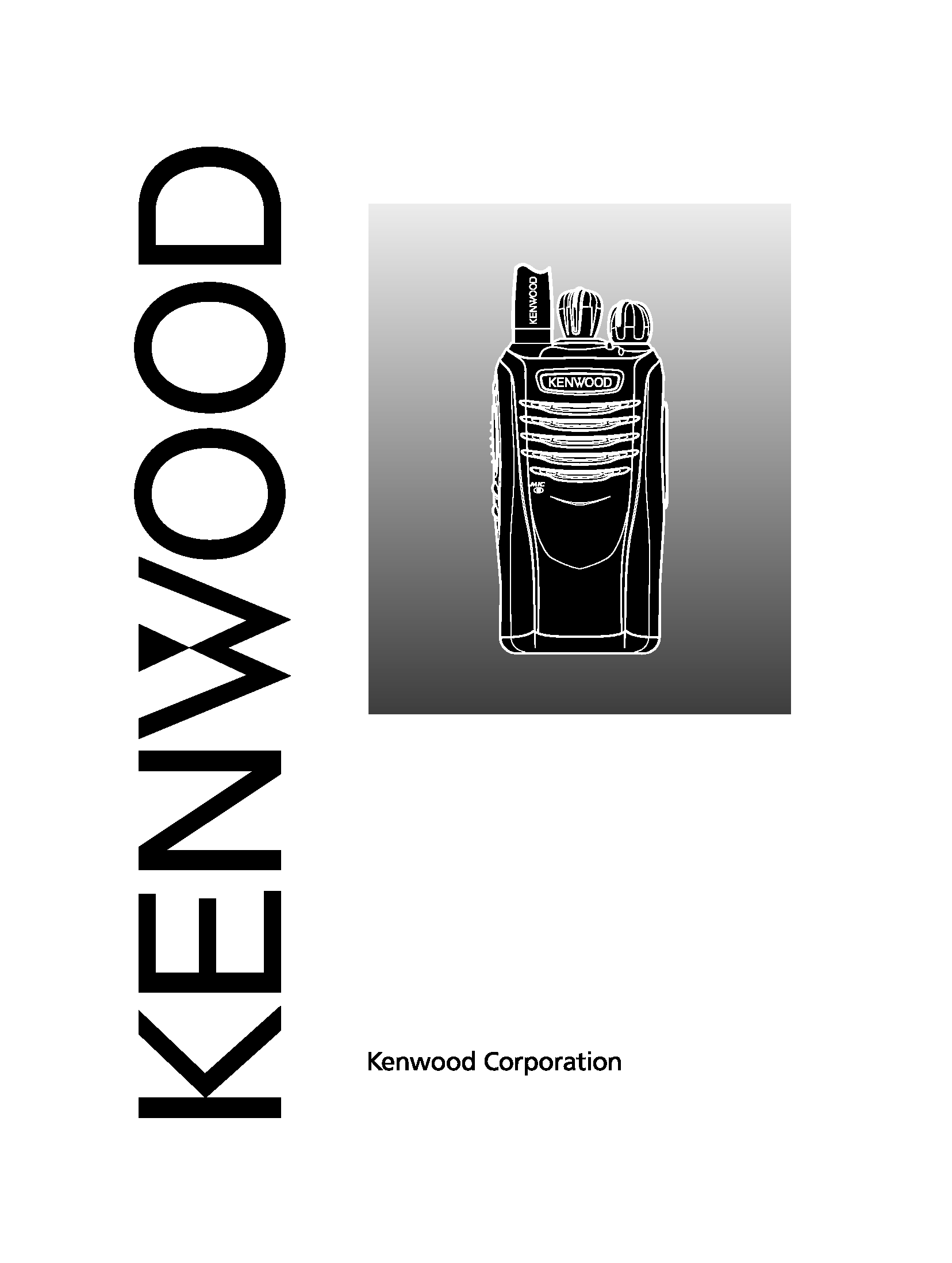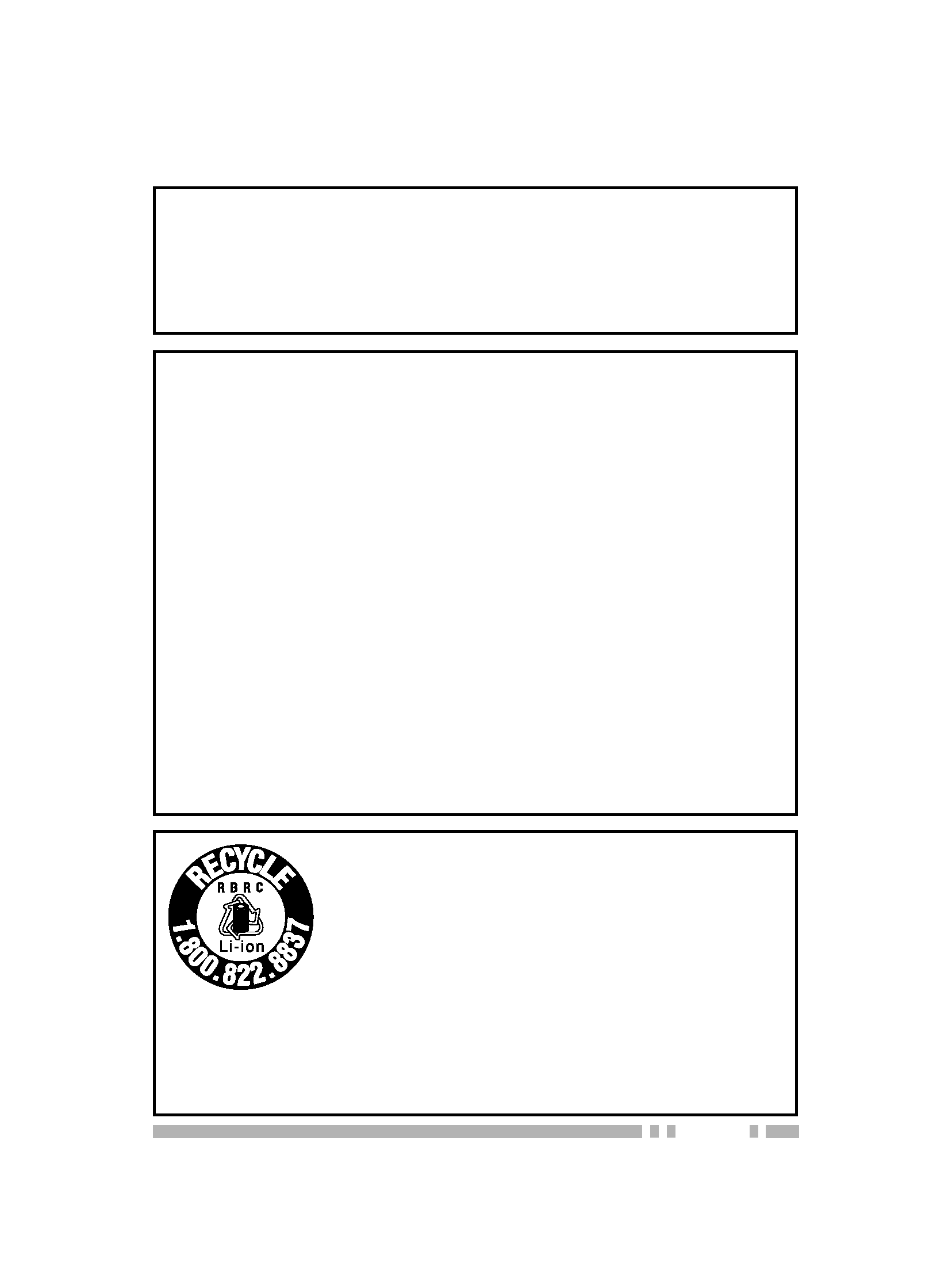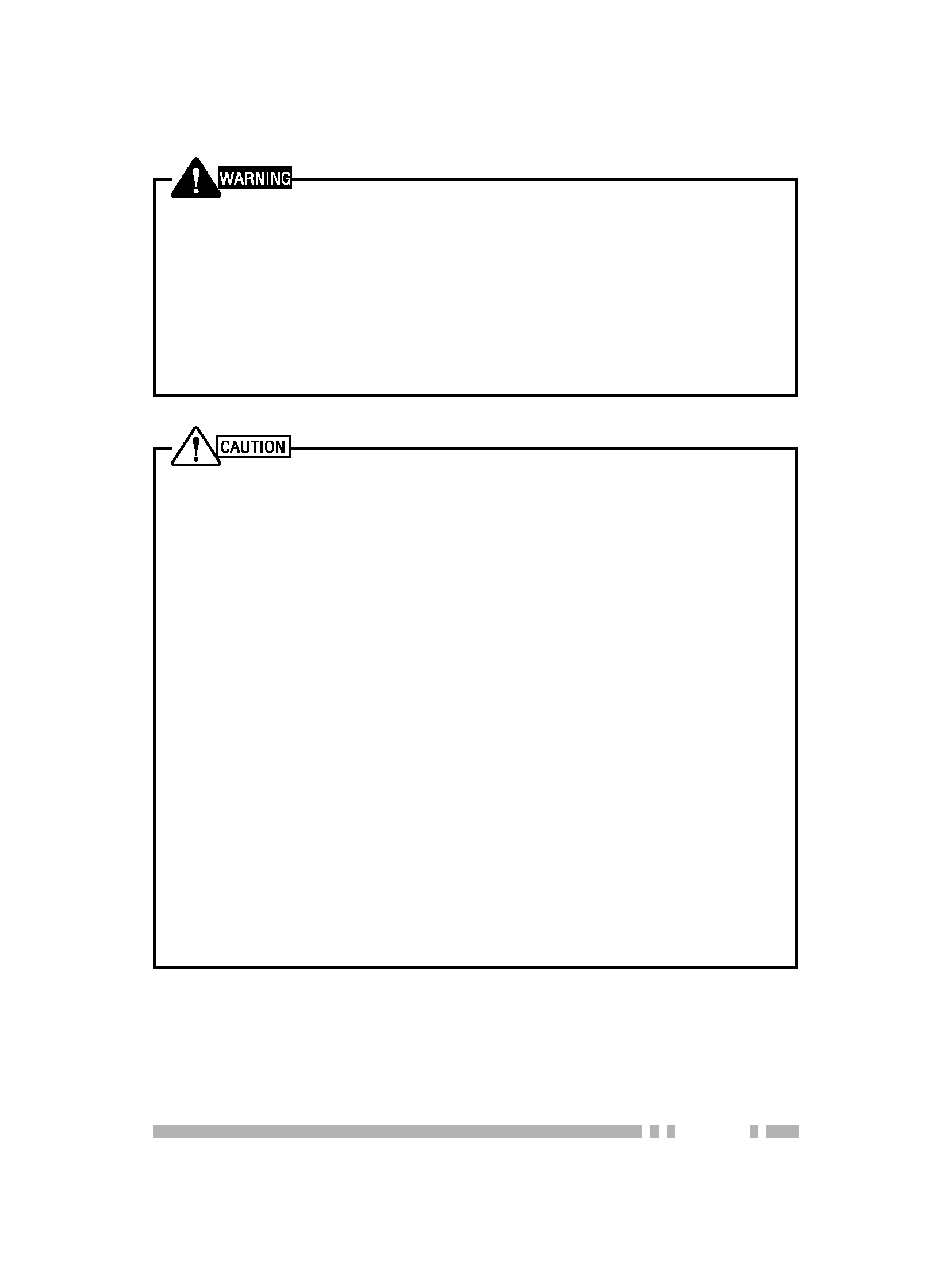
© B62-2182-00 (K, K2)
09 08 07 06 05 04 03 02 01 00
INSTRUCTION MANUAL
VHF FM TRANSCEIVER
TK-2360
UHF FM TRANSCEIVER
TK-3360

Thank You
We are grateful you have chosen Kenwood for your land
mobile radio applications.
noTices To The user
Government law prohibits the operation of unlicensed radio
transmitters within the territories under government control.
Illegaloperationispunishablebyfineand/orimprisonment.
Referservicetoqualifiedtechniciansonly.
SAFETY:
It is important that the operator is aware of and
understands hazards common to the operation of any
transceiver.
Firmware Copyrights
Thetitletoandownershipofcopyrightsforfirmwareembeddedin
Kenwood product memories are reserved for Kenwood Corporation.

One or more of the following statements may be applicable:
FCC WARNING
Ths equpment generates or uses rado frequency energy.
Changes or modifications to this equipment may cause harmful
interference unless the modifications are expressly approved in the
instruction manual. The user could lose the authority to operate this
equipment if an unauthorized change or modification is made.
INFORMATION TO THE DIGITAL DEVICE USER REQUIRED BY
THE FCC
This equipment has been tested and found to comply with the limits
for a Class B digital device, pursuant to Part 15 of the FCC Rules.
These limits are designed to provide reasonable protection against
harmful interference in a residential installation.
This equipment generates, uses and can generate radio
frequency energy and, if not installed and used in accordance
with the instructions, may cause harmful interference to radio
communications. However, there is no guarantee that the
interference will not occur in a particular installation. If this equipment
does cause harmful interference to radio or television reception,
which can be determined by turning the equipment off and on, the
user s encouraged to try to correct the nterference by one or more of
the following measures:
·
Reorient or relocate the receiving antenna.
·
Increase the separation between the equipment and receiver.
·
Connect the equipment to an outlet on a circuit different from
that to which the receiver is connected.
·
Consult the dealer for technical assistance.
The RBRC Recycle seal found on Kenwood
lithium-ion (Li-ion) battery packs indicates
Kenwood
's voluntary participation in an industry
program to collect and recycle Li-ion batteries
after their operating life has expired. The RBRC
program is an alternative to disposing Li-ion
batteries with your regular refuse or in municipal
waste streams, which is illegal in some areas.
For information on Li-ion battery recycling in your area, call (toll
free) 1-800-8-BATTERY (1-800-822-8837).
Kenwood
's involvement in this program is part of our commitment
to preserve our environment and conserve our natural resources.

The RBRC Recycle seal found on Kenwood nickel
metal hydride (Ni-MH) battery packs indicates
Kenwood
's voluntary participation in an industry
program to collect and recycle Ni-MH batteries after
their operating life has expired. The RBRC program
is an alternative to disposing Ni-MH batteries with
your regular refuse or in municipal waste streams,
which is illegal in some areas.
For information on Ni-MH battery recycling in your area, call (toll
free) 1-800-8-BATTERY (1-800-822-8837).
Kenwood
's involvement in this program is part of our commitment
to preserve our environment and conserve our natural resources.
Precautions
· Do not charge the transceiver and battery pack when they are wet.
· Ensure that there are no metallic items located between the
transceiver and the battery pack.
· Do not use options not specified by Kenwood.
· If the die-cast chassis or other transceiver part is damaged, do not
touch the damaged parts.
· If a headset or headphone is connected to the transceiver, reduce
the transceiver volume. Pay attention to the volume level when
turning the squelch off.
· Do not place the microphone cable around your neck while near
machinery that may catch the cable.
· Do not place the transceiver on unstable surfaces.
· Ensure that the end of the antenna does not touch your eyes.
· When the transceiver is used for transmission for many hours, the
radiator and chassis will become hot. Do not touch these locations
when replacing the battery pack.
· Always switch the transceiver power off before installing optional
accessores.
· The charger is the device that disconnects the unit from the AC
mains line. The AC plug should be readily accessible.

· Do not disassemble or modify the transceiver for any reason.
· Do not place the transceiver on or near airbag equipment while
the vehicle is running. When the airbag inflates, the transceiver
may be ejected and strike the driver or passengers.
· Do not transmit while touching the antenna terminal or if
any metallic parts are exposed from the antenna covering.
Transmitting at such a time may result in a high-frequency burn.
· If an abnormal odor or smoke is detected coming from the
transceiver, switch the transceiver power off immediately,
remove the battery pack from the transceiver, and contact your
Kenwood
dealer.
· Use of the transceiver while you are driving may be against
traffic laws. Please check and observe the vehicle regulations
n your area.
· Do not expose the transceiver to extremely hot or cold
condtons.
· Do not carry the battery pack (or battery case) with metal
objects, as they may short the battery terminals.
· Danger of explosion if the battery is incorrectly replaced;
replace only with the same type.
Turn the transceiver power off in the following locations:
· Near blasting sites.
· In airplanes. (Any use of the transceiver must follow the
instructions and regulations provided by the airline crew.)
· Where restrictions or warnings are posted regarding the use of
radio devices, including but not limited to medical facilities.
· Near persons using pacemakers.
